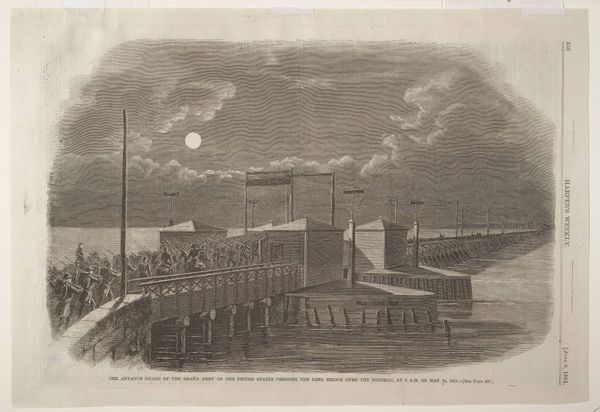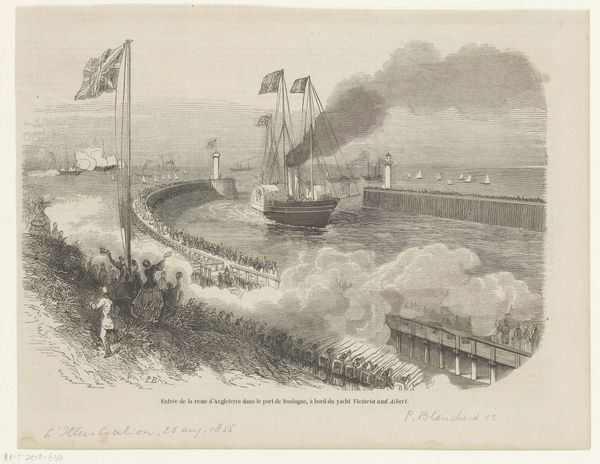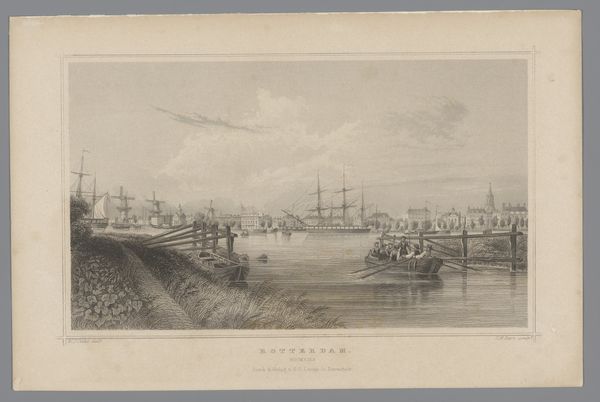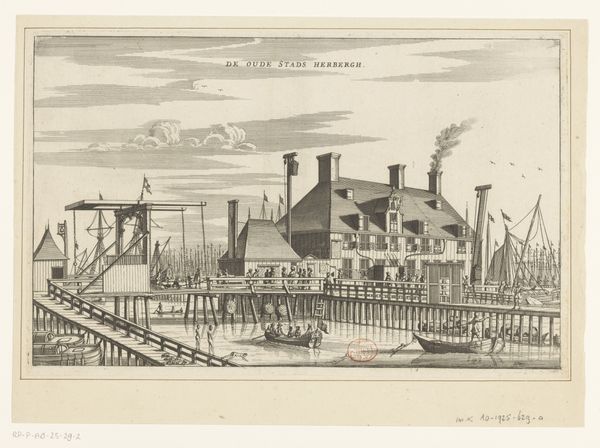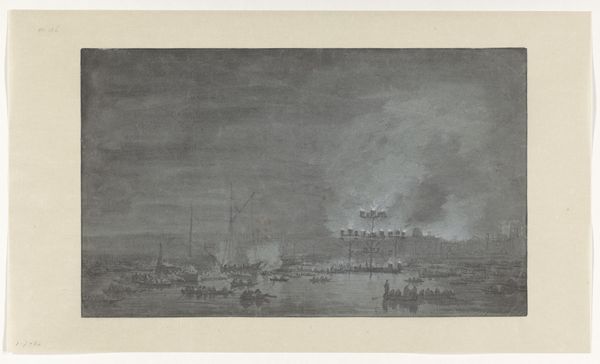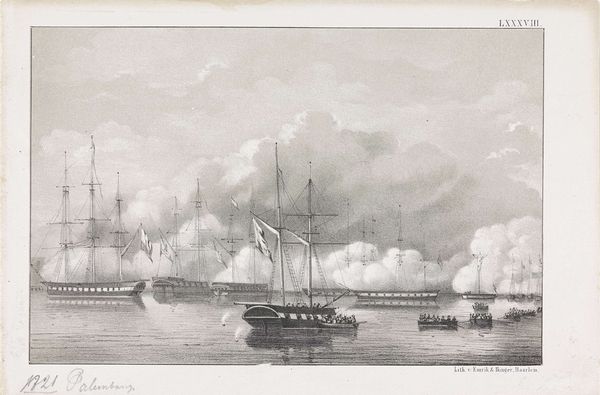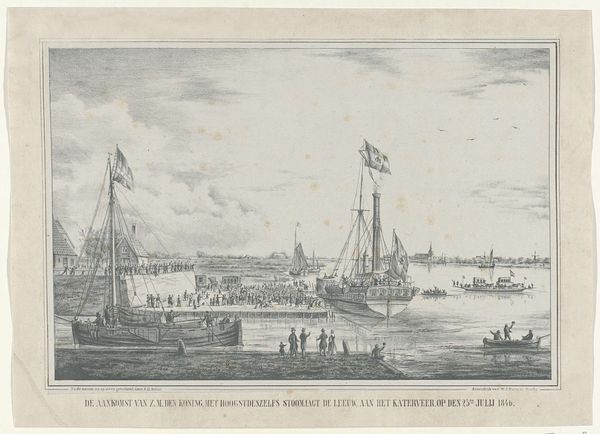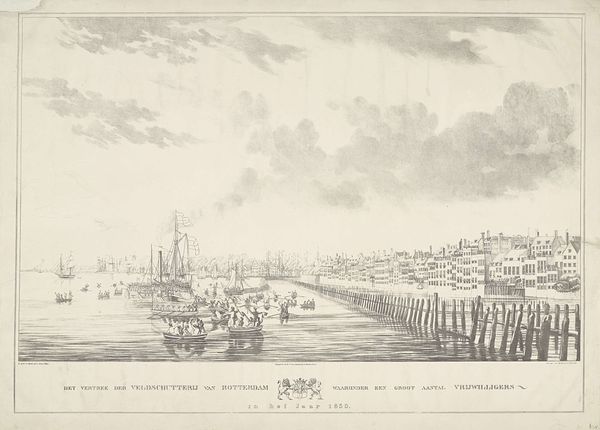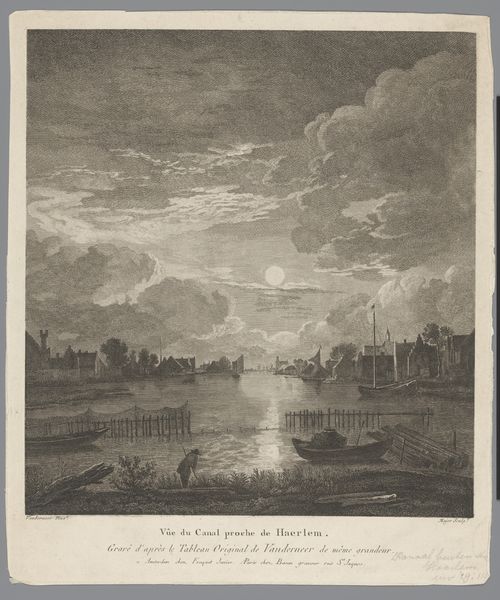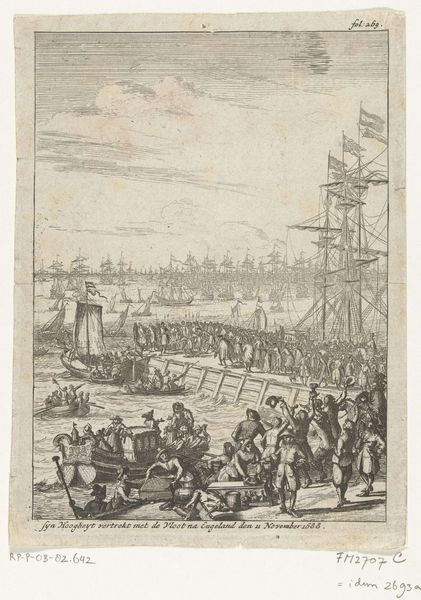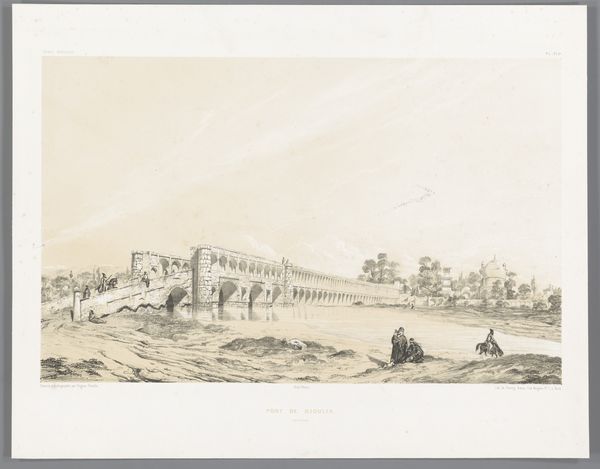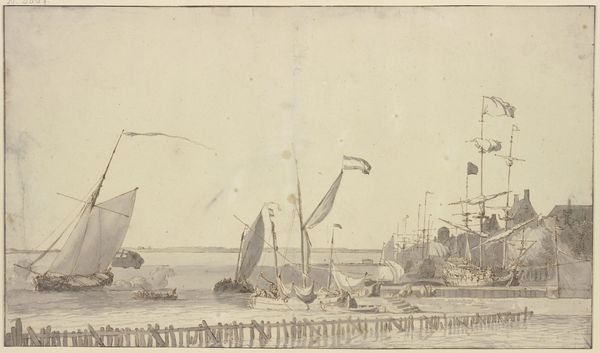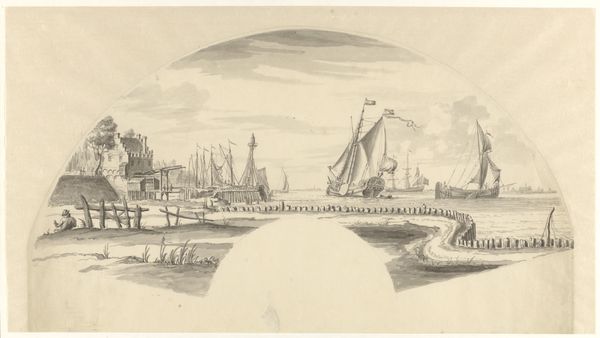
The Advance Guard of the Grand Army of the United States Crossing the Long Bridge over the Potomac at 2 A.M. on May 24, 1861 Possibly 1861
0:00
0:00
drawing, print, paper, engraving
#
drawing
# print
#
landscape
#
paper
#
united-states
#
history-painting
#
engraving
#
realism
Dimensions: 232 × 352 mm (image); 295 × 407 mm (sheet)
Copyright: Public Domain
Editor: This is "The Advance Guard of the Grand Army of the United States Crossing the Long Bridge over the Potomac at 2 A.M. on May 24, 1861," possibly from 1861, by Winslow Homer. It’s a black and white engraving, and it feels quite dramatic. All those marching figures are cast in this ethereal moonlight. What do you see in this piece? Curator: The stark moonlight definitely heightens the drama, doesn't it? But it also speaks to a deeper resonance. Think about bridges: throughout history, they are symbolic connections, passages from one state to another, one idea to the next. And then, we see soldiers—the very figures representing national ideals, venturing forward. That moon, presiding over them like an all-seeing eye, makes one wonder what sort of cultural baggage or expectation is implied. Is it judgment? Guidance? Perhaps both? Editor: So the moonlight adds a layer of meaning beyond just setting the scene. I was mainly focused on the literal depiction. Curator: Certainly. Yet even within realism, there's room for symbolic reading. Note the specific time—2 AM. Consider it metaphorically; is it the darkest hour before the dawn? An hour rife with hidden fear? Or, reflect on what bridges mean: security or fragility? A connection, but also a boundary? Editor: I guess I hadn’t really considered the potential symbolism of time. That makes the image far more complicated, charged even. Curator: It’s the visual symbols working in concert with what we know and feel, a conversation between the artist and the collective unconscious of the audience. The moon, the bridge, the hour - they each add emotional and intellectual weight to this pivotal historical moment. Editor: I'll never look at a historical image quite the same way. Now I know there is more than meets the eye! Curator: Indeed, history remembers through symbolism. Art allows us to decipher it.
Comments
No comments
Be the first to comment and join the conversation on the ultimate creative platform.
